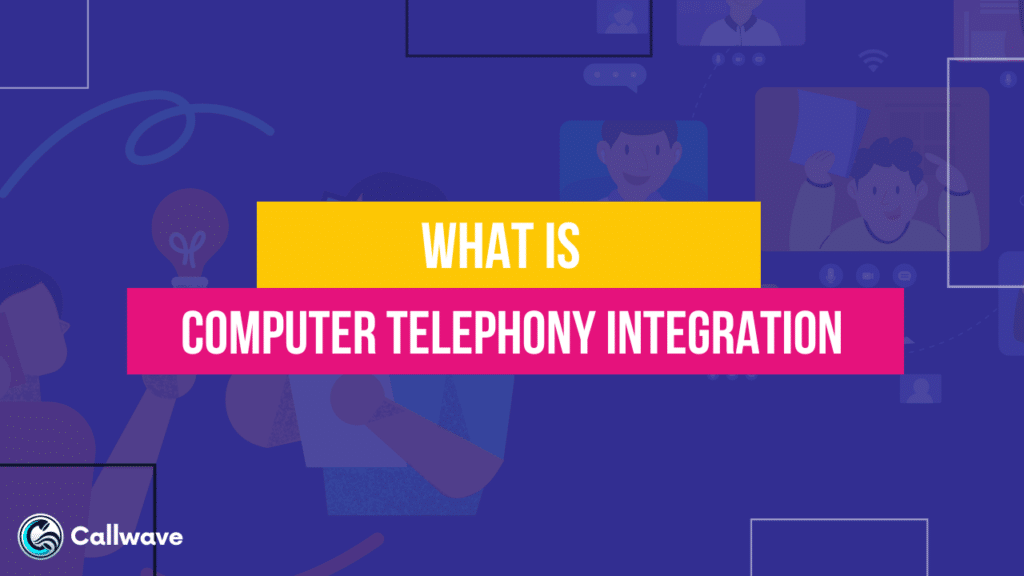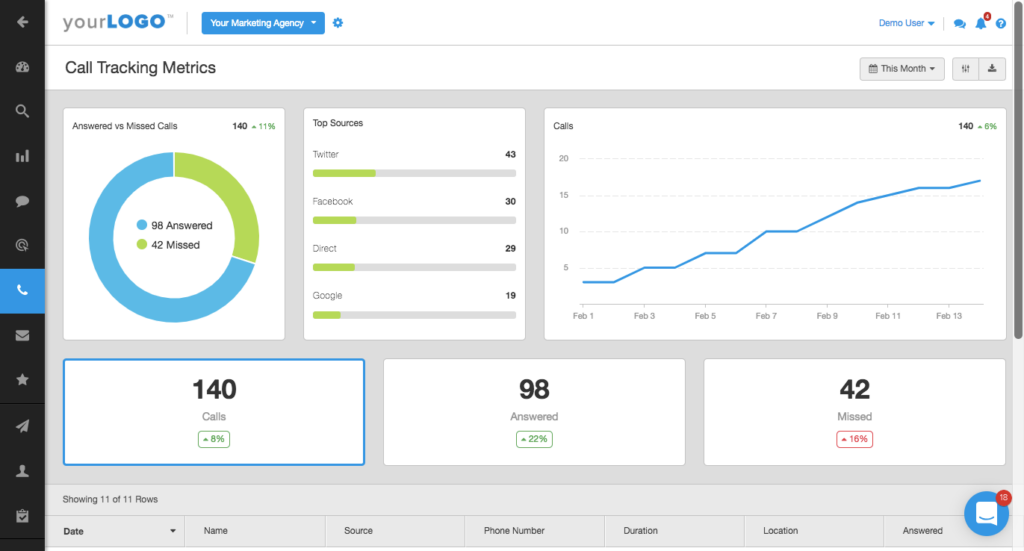Computer Telephony Integration, or CTI for short, is a way for computers and telephone systems to work together.
It allows the computer to control and manage phone calls, making communication between people and computers easier and more powerful.
CTI combines the features of a telephone system with the capabilities of a computer.
It enables the computer to perform tasks like making calls, answering calls, transferring calls, and retrieving information about callers.

How Does Computer Telephony Integration Work?
Computer Telephony Integration relies on special software and hardware to connect a telephone system to a computer system.
This allows the two systems to share information and control each other’s functions.
The key components involved in CTI are:
- The Telephone System This is the traditional phone equipment like desk phones, phone lines, and private branch exchanges (PBXs) that handle voice calls.
- The Computer System This includes desktop computers, servers, databases, and software applications used for various tasks like customer relationship management (CRM).
- The CTI middleware This is specialized computer software that acts as a “translator” between the telephone and computer systems. It allows them to integrate and communicate with each other.
Here’s how the different components work together:
When a phone call comes in, the telephone system sends caller information like the phone number to the CTI middleware software.
The CTI middleware then takes that caller information and interacts with the computer system. It might look up the caller’s records in a database or fetch relevant scripts for the agent to follow.
The caller’s information and associated data is then presented to the agent on their computer screen through the CTI software application.
Similarly, when an outbound call is made, the agent can control phone functions like dialing, transferring, or hanging up right from their computer using the CTI application.
The CTI middleware relays the commands from the computer to the telephone system to execute the desired phone operations.
Special hardware and interfaces like telephony cards and frameworks may be used to physically link the phone and computer systems for the exchange of voice and data.
Call data like recordings, logs, notes are stored by the CTI software for future reference, analysis, and reporting.
So in essence, the CTI middleware seamlessly connects and synchronizes the two otherwise separate domains of voice telephony and computer data/applications – enabling unified management and new functionalities.
Benefits of Computer Telephony Integration
Here are the key benefits of Computer Telephony Integration (CTI) explained in depth, with at least 5 lines per benefit:
1. Improved Customer Service
CTI allows customer service agents to have quick access to caller information and data even before answering the call.
This helps them personalize the interaction and resolve issues more efficiently. Agents don’t have to waste time asking for basic details as the caller’s account information, purchase history, and previous interactions are automatically displayed on their computer screen.
This streamlined access to relevant data means customers get their queries handled faster and in a more knowledgeable manner, leading to higher satisfaction.
Additionally, CTI enables advanced call routing to ensure calls are transferred to the most suitable agent based on their skillset, reducing transfers and hold times. Overall, CTI empowers agents to deliver a superior, personalized experience to customers through quicker resolution and more contextual service.

2. Increased Employee Productivity
With CTI, employees can manage both voice calls and computer tasks from a single unified interface, eliminating the need to juggle between multiple systems.
Simple point-and-click or keyboard operations allow agents to dial numbers, transfer calls, bring up customer records, and make notes seamlessly without having to manually lookup information.
Call logs and recordings captured by the CTI system serve as valuable references, reducing the need for agents to manually document every interaction. The automation of routine tasks like screen pops and click-to-dial frees up agent time which can be better utilized for high-value customer-facing work.
Agents are more productive as CTI cuts down on redundant data entry, application switching, and associated inefficiencies in the workflow.
3. Integrated View of Information
CTI integrates all communication channels like voice, email, chat, and social media into one centralized platform providing a comprehensive view of customer interactions.
Details from various touchpoints are compiled into a single coherent profile giving a complete picture of the customer journey. This 360-degree view helps employees better understand customer needs, preferences, and historical context to offer more personalized service.
Up-to-date information is readily accessible to authorized personnel across departments like sales, marketing, and support for quicker handoffs and smooth experience transitions.
Such integration and unified data access enhance cross-team collaboration and enable more informed decision-making for improved customer experience management.
4. Powerful Analytics and Reporting
The CTI system automatically captures rich interaction data like call times, durations, dispositions, recordings, and any computer activities during the call.
This granular data combined with details from other channels generates comprehensive reports and dashboards for tracking key performance metrics.
Managers get in-depth visibility into areas like call volumes, handle times, agent performance, and service levels for efficient workforce planning. Speech analytics can be applied on call recordings to analyze customer sentiments, recurring issues, compliance aspects, and identify training needs.
These actionable insights derived from CTI data allow businesses to continuously optimize their processes, improve productivity, and drive better results.

5. New Revenue Opportunities
CTI enables various advanced capabilities that businesses can leverage to increase sales and generate new revenue streams.
Features like computer-based predictive dialing, automated outbound calling campaigns, and click-to-call enable more efficient telemarketing and lead-generation efforts.
Screen pops and desktop assistants can automatically present targeted upsell/cross-sell offers to agents based on the customer’s profile and past purchases. CTI powers cost-effective self-service IVR systems that can convert basic inquiries into sales by allowing callers to place orders over the phone.
Location-based services combined with CTI can trigger promotional offers to nearby customers’ mobile phones based on their real-time location. Integrating CTI with e-commerce platforms creates opportunities for “click-to-call” assistance, improving online sales conversions.
Key features and Functionality
1. Integrations with Third-Party Business Software
CTI solutions can integrate with various third-party business applications like customer relationship management (CRM), enterprise resource planning (ERP), helpdesk software, etc. This integration allows a seamless flow of data between the phone system and other business platforms.
For example, when a customer calls, their records from the CRM can automatically pop up on the agent’s screen with all relevant details.
Agents can then make updates/notes during the call which sync back to the CRM. Such integrations provide a unified view of customer information across the IT.
2. Screen Pops
Screen pop is one of the most commonly used CTI capabilities. When a call comes in, the CTI system can instantly display a pop-up screen with the caller’s information like name, account number, past interactions, etc.
This saves the agent’s time from manually looking up the caller’s details. Screen pops can also display scripts/prompts to guide agents during the call. The reduced handle time and quicker data access enhance productivity and customer service.
3. Automatic Dialer Modes
CTI platforms offer various automated dialing modes like preview dialing, predictive dialing, power dialing etc. In preview mode, the system presents the agent with the next call recipient’s information for review before making the call.
Predictive dialers use algorithms to automatically call multiple people simultaneously and connect answered calls to available agents – maximizing agent talk time.
Power dialers automatically place the next outbound call as soon as an agent wraps up the previous one. These capabilities boost the efficiency of outbound calling campaigns.

4. IVR and Auto Attendants
Interactive voice response (IVR) systems use pre-recorded voice menus to automatically assist callers and route calls based on their selections via phone keypad or speech input.
CTI enables advanced IVR capabilities like customer identification, database lookups, self-service functionalities (account balances, order placing, etc.).
Auto attendants use similar technology to answer and direct incoming calls to the appropriate person/department by integrating with employee directories. These reduce the load on human agents.
5. Call Routing
CTI provides intelligent call routing based on various factors like agent availability, skillsets, call origin, customer value etc.
Calls can be prioritized and queued appropriately to ensure faster handling of important customers. Skills-based routing matches callers with agents having the most relevant capabilities.
Location-based routing connects calls to agents or contact centers closest to the caller. This improves first-call resolutions and customer satisfaction.
6. Call Monitoring and Analytics
CTI systems capture a wealth of data from phone interactions such as call recordings, agent notes, time metrics and more.
This data can be analyzed to generate valuable insights like call traffic patterns, common issues, process bottlenecks, agent performance etc.
Supervisors can use call monitoring to silently listen in, whisper coach or barge into calls for quality assurance. Analytics provide actionable intelligence to optimize staffing, identify training needs, improve service levels and drive operational efficiencies.

What To Look For In A CTI Provider?
When evaluating and selecting a Computer Telephony Integration (CTI) provider, there are several key factors to consider to ensure you choose the right solution for your business needs.
Here are some important things to look for in a CTI provider:
- Scalability and Flexibility: A good CTI provider should offer a solution that can scale up or down easily as your business grows or requirements change. Look for a flexible system that can accommodate increasing call volumes, more agents, and additional functionalities without major overhauls or downtimes.
- Integration Capabilities: Since CTI involves integrating your phone system with other business applications, ensure the provider offers out-of-the-box integrations with the software you currently use, such as CRM, helpdesk, workforce management tools, etc. Seamless integration is crucial for a smooth workflow and unified view of customer data.
- Customization Options: While most CTI solutions offer standard features, your business may have unique requirements. Evaluate how customizable the provider’s offering is to meet your specific needs, workflows, and industry-specific compliance regulations.
- Reporting and Analytics: A good CTI system should provide comprehensive reporting and analytics capabilities to help you gain insights into call metrics, agent performance, customer behavior, and identify areas for improvement. Look for real-time dashboards, historical reporting, and speech analytics features.
- Reliable Support and Training: Implementing a CTI solution can be complex, so it’s important to have access to reliable technical support and training resources from the provider. Check their support channels (phone, email, chat), response times, and whether they offer comprehensive user training and documentation.
- Security and Compliance: Since CTI deals with sensitive customer data and voice recordings, it’s crucial to ensure the provider follows strict security protocols and compliance standards (e.g., PCI-DSS, HIPAA, GDPR) to protect your business and customers.
- Pricing and Total Cost of Ownership: Compare the pricing models and total cost of ownership (TCO) of different CTI providers, considering factors like upfront costs, ongoing fees, maintenance, training, and potential future upgrades or add-ons.
By evaluating these factors, you can increase the chances of selecting a CTI provider that aligns with your business goals, technical requirements, and budget, while providing a robust and future-proof solution.
The Bottom Line
By bridging telephone and computer systems, CTI empowers businesses with enhanced customer service, boosted productivity, unified data access, and revenue generation opportunities.
With features like screen pops, intelligent routing, analytics, and cross-platform integration, CTI equips organisations to deliver seamless experiences.
As businesses strive for operational excellence, CTI emerges as a transformative solution, optimising workflows, driving insights, and elevating customer satisfaction to new heights.






